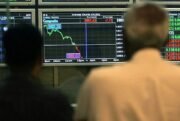In a landmark achievement, BYD Inc. announced on November 1 that it delivered more than 500,000 electric vehicles (EVs) in October, setting a new record for the company. This impressive feat not only marks a significant milestone for BYD but also propels it closer to becoming China’s largest automaker. The surge in sales comes at a time when nearly a dozen Chinese automakers reported record-breaking figures for the month, highlighting a robust recovery in the nation’s automotive sector.
Dominance in the Hybrid Electric Vehicle Market
BYD’s remarkable October performance is largely driven by the increasing popularity of plug-in hybrid electric vehicles (PHEVs). According to the China Passenger Car Association (CPCA), nearly 60% of BYD’s sales between January and October were PHEVs, a category that has seen explosive growth. Leapmotor, another key player, reported a staggering 109.7% increase in car deliveries, reaching 38,177 units in October alone.

Shift Towards Hybrid Models
The preference for hybrid models over fully battery electric vehicles (BEVs) is reshaping the market dynamics. While BEV sales grew by only 17.6% year-on-year, PHEV sales soared by 78.5% in China for the first nine months of the year. This trend reflects consumer anxiety about EVs running out of power, making hybrids a more attractive option for many buyers.
Competitive Landscape: BYD vs. Tesla and Others
BYD’s October sales figures have significant implications for the competitive landscape in China. The company’s quarterly revenue surpassed that of Tesla for the first time, signaling a potential shift in the market hierarchy. With cumulative sales reaching over 3.2 million cars year-to-date, BYD is on track to achieve its annual goal of 4 million car sales.
Other Automakers Making Strides
While BYD leads the pack, other Chinese automakers like Zeekr, Nio, and Avatr are also making notable gains. Zeekr reported a 92% increase in October sales, while Nio is set to launch its new FIREFLY brand in December, focusing on mini-car models with rechargeable and replaceable pure electric technologies. Avatr, a luxury brand under Changan, doubled its sales to over 10,000 units thanks to its 07 crossovers featuring BEV and EREV options.
Strategic Investments and Market Expansion
The success of BYD and its peers is underpinned by substantial investments in EV production and technological innovation. According to S&P Global Ratings, Chinese automakers are pouring over $20 billion into building EV production facilities in South and Southeast Asia (SSEA). This strategic move helps manufacturers diversify their operations and customer base amid fierce competition at home.
Leveraging Regional Markets
Chinese manufacturers are keen to tap into SSEA markets like Thailand, Indonesia, and Malaysia, where direct exports to Europe face steep tariffs. By establishing production hubs in these regions, companies can streamline their supply chains and cater more effectively to local demand, avoiding the high costs associated with international trade barriers.
Challenges and Future Outlook
Despite the impressive sales growth, BYD and other Chinese automakers face several challenges. The slowing growth of fully battery electric vehicles highlights the need for continued innovation in hybrid technologies. Additionally, the rise in underage use of PHEVs and BEVs poses regulatory and societal concerns that the industry must address.
Navigating Market Dynamics
Carmakers must balance the push for high-volume sales with the need to maintain quality and sustainability. The increase in hybrid sales indicates a consumer preference for versatile and reliable vehicles, which may drive further investments in hybrid technology and infrastructure development.
Implications for the Global Automotive Industry
BYD’s surge in sales has broader implications for the global automotive industry. As the company edges closer to becoming the largest automaker in China, it sets the stage for increased competition on the international front. This growth is expected to influence global EV trends, encouraging other manufacturers to innovate and expand their market reach.
Setting New Standards
BYD’s commitment to producing high-quality, internationally designed components positions it as a leader in the EV market. The company’s ability to consistently deliver large volumes without compromising on standards sets a new benchmark for the industry, pushing competitors to elevate their own production capabilities.
BYD’s achievement of selling over 500,000 EVs in October is a testament to its strategic vision and operational excellence. As the company continues to expand its market presence and innovate its product offerings, it is well on its way to becoming China’s biggest automaker. The combination of robust sales, strategic investments, and a focus on hybrid technologies positions BYD to lead the charge in the evolving landscape of the global automotive industry.
















